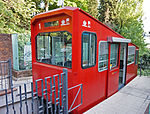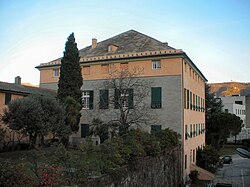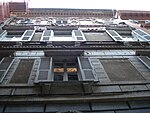Villa Gruber De Mari
Buildings and structures in GenoaResidential buildings completed in the 17th centuryVillas in Liguria

Villa Gruber De Mari was built by the noble Genoese family De Mari in the second half of the 16th century in the suburban area between the Sant'Anna and San Rocchino walkways linking the center of the city to the New Walls, in the Castelletto neighborhood of Genoa, Italy. The villa includes a 16th-century guard tower and the 17th-century former private chapel, now the Abbatial Church of Santa Maria della Sanità. The villa is located in a panoramic position within a large park, which has been opened to the public after the villa was acquired by the Municipality of Genoa in the 20th century.
Excerpt from the Wikipedia article Villa Gruber De Mari (License: CC BY-SA 3.0, Authors, Images).Villa Gruber De Mari
Via Cesare Corte, Genoa Castelletto
Geographical coordinates (GPS) Address External links Nearby Places Show on map
Geographical coordinates (GPS)
| Latitude | Longitude |
|---|---|
| N 44.4152 ° | E 8.9402 ° |
Address
Villa Gruber De Mari
Via Cesare Corte
16122 Genoa, Castelletto
Liguria, Italy
Open on Google Maps











